16.6 Artistic Images of Celtic Myths and Legends
Learning Objectives.
- To take a closer look at the Celtic Revival Movement and its connection to ancient Celtic myths and folklore.
- To explore the modern connections between Celtic Art and contemporary art and design.
- To read Celtic folklore, legends, and myths and become familiar with the literature and its impact on contemporary writing. To read more about Celtic Myths and Legends, please click on the links below.
- Ancient Irish Myths and LegendsHeroic Myths and Legends of Ancient Ireland
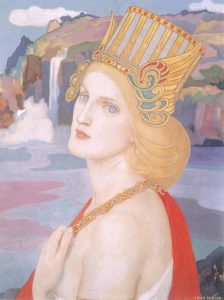
Courtesy: By John Duncan (1866-1945) – http://www.the-athenaeum.org/art/full.php?ID=27647, Public Domain, https://commons.wikimedia.org/w/index.php?curid=46025146
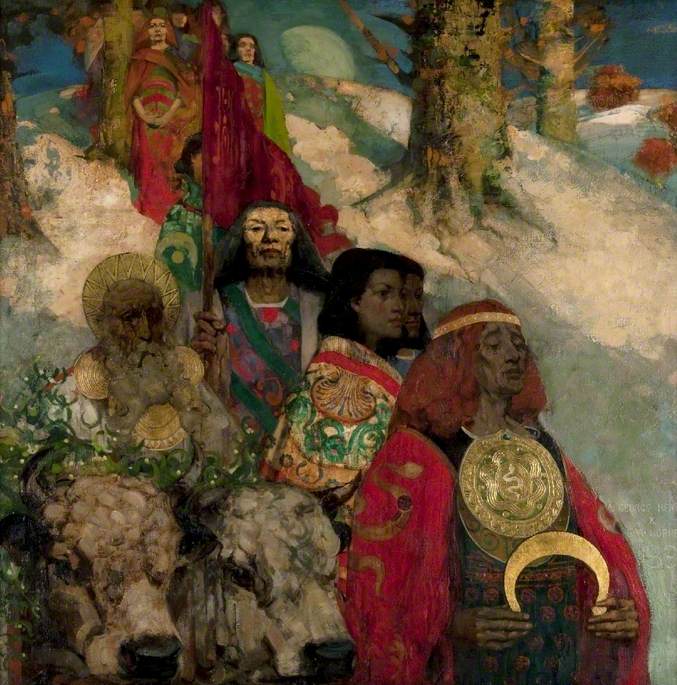
Glasgow Museums Resource Centre Note about this art work.
“Here we see the rite of bringing in the sacred mistletoe, and showing a group of Druids or Celtic priests in richly decorated ceremonial robes and insignia proceeding down a steep hillside in solemn procession. The mistletoe, cut from the sacred oak by a golden sickle held by the chief druid, is ceremoniously received by subordinates in white raiment and borne home reverently on the backs of the white bulls. Mistletoe is significant as a plant revered by the druids for its magical as well as medicinal properties. In the 1890s there was a revival of interest in Celtic art and folklore; the influence of this can be seen in the use of complex intertwining patterns on the priests’ robes and also on the pattern work of the frame.’ https://artuk.org/discover/artworks/the-druids-bringing-in-the-mistletoe-84452
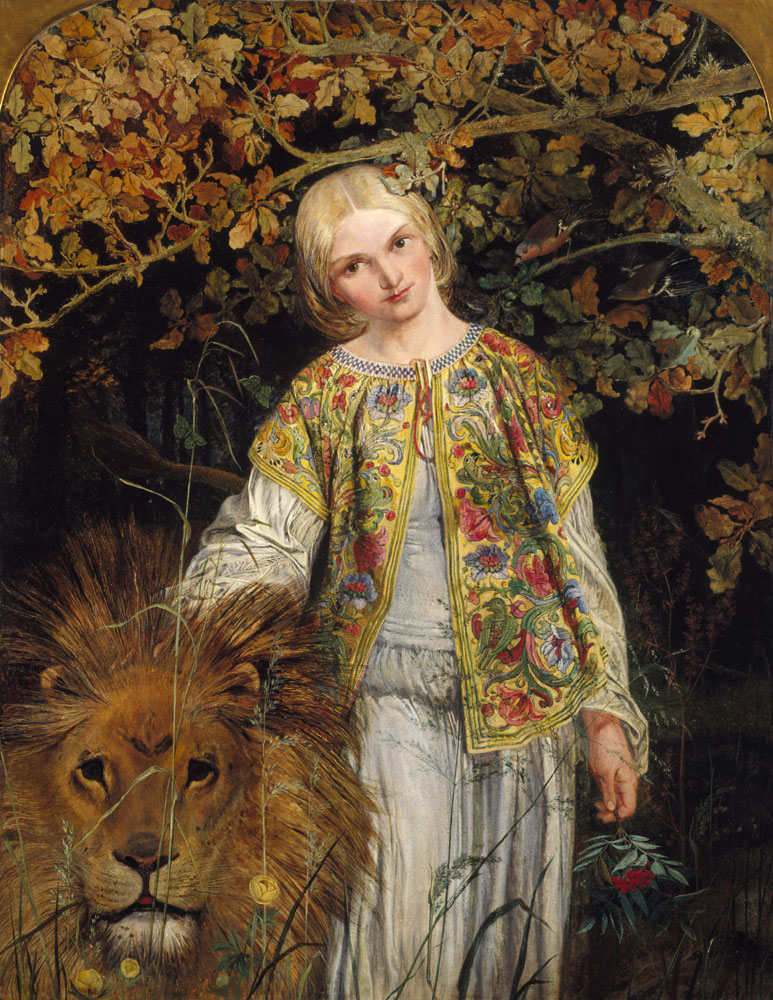
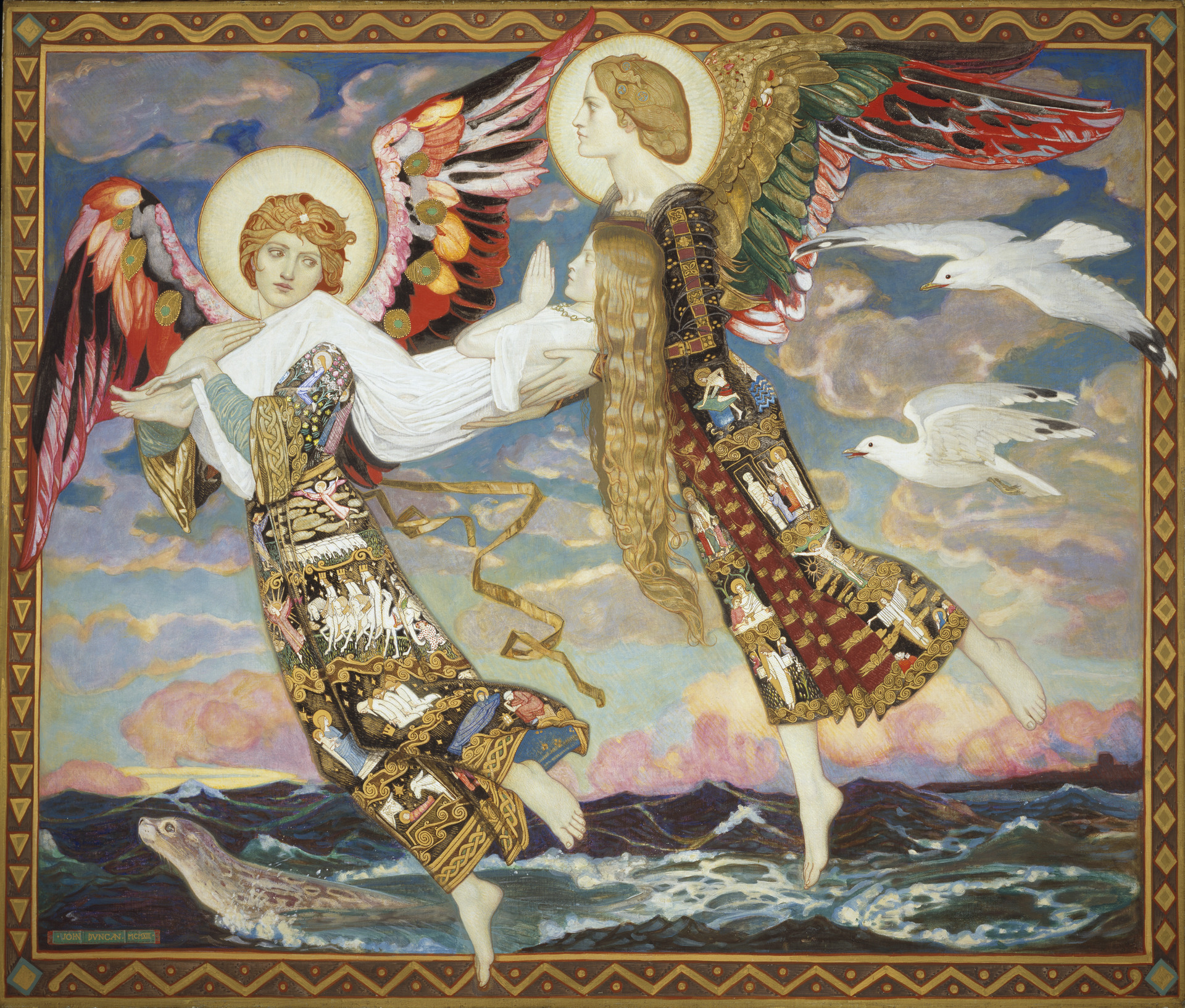
The Legend of St. Bride:
“According to the legend of the Irish Saint Bride she was transported miraculously to Bethlehem to attend the nativity of Christ. Here two angels carry the white robed saint across the sea. The seascape reflects Duncan’s fascination with the Outer Hebrides and the Isle of Iona. The birds and seal provide an effective naturalistic foil for the supernatural angels overlapping the patterned border. Scenes from the life of Christ decorate the angel’s robes, and may include the artist’s self-portrait as the tiny clown (a holy fool) accompanying the procession of the magi on the leading angel’s gown.” ( National Galleries of Scotland, Edinburgh, Scotland. Public Domain).
The Celtic Revival
The Celtic Revival (also referred to as the Celtic Twilight was, in part, a reaction to the increased modernation and mechanization of the growing Industrial Age of the 19th century. Writers such as W.B. Yeats and James Joyce and painters such as John Duncan, William Bell Scott, George Henry, and E.A. Hornel drew from the rich Celtic myths, legends, and folklore of earlier centuries. While there are many complex features to the movement (mid-1800s and the early 1900s), ancient folk tales and myths were sources of inspiration for these artists and writers. A revival for Celtic languages such as Breton, Gallic, Scottish Gallic, Irish, Welsh, etc. continued to grow in interest. The paintings featured idyllic and romanticized depictions of Celtic heroes and their journeys. In art, Celtic Revival art can be found in metalwork, jewellery, embroidery, tapestries, wall decoration, wood inlay, stone-carving, and textiles. Charles Rennie Mackintosh and Margaret MacDonald were Scottish artists and architectural designers who created a fresh modern look that incorporated motifs of the Celtic Revival; floral patterns, hearts, roses, and symbols that hearkened to a rich cultural path. The Celtic Tree of Life, Celtic Cross and the insular brooches with geometric swirls and weaves, serpents, intricate animal and florals designs continue to be popular.
For more information about the Celtic Revival please open the link here.
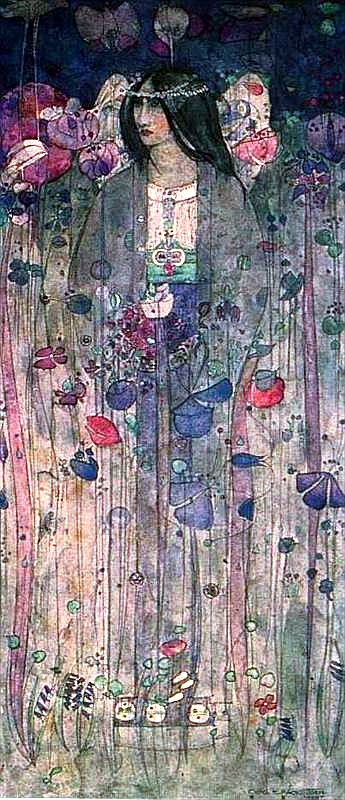
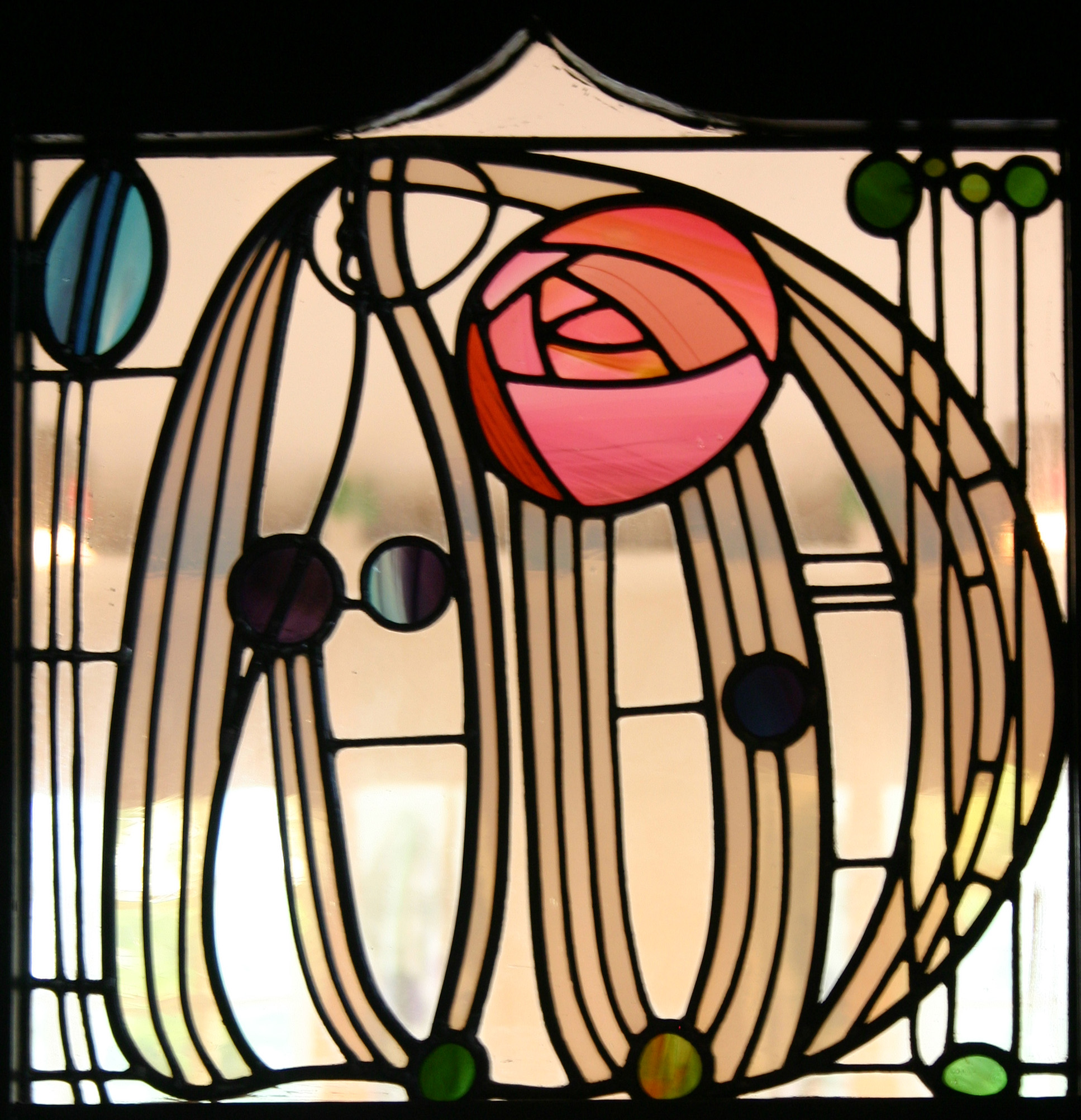
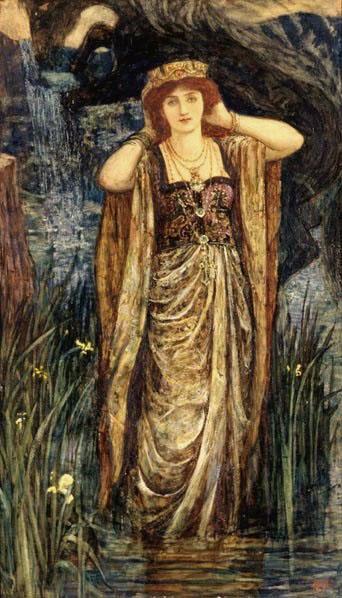
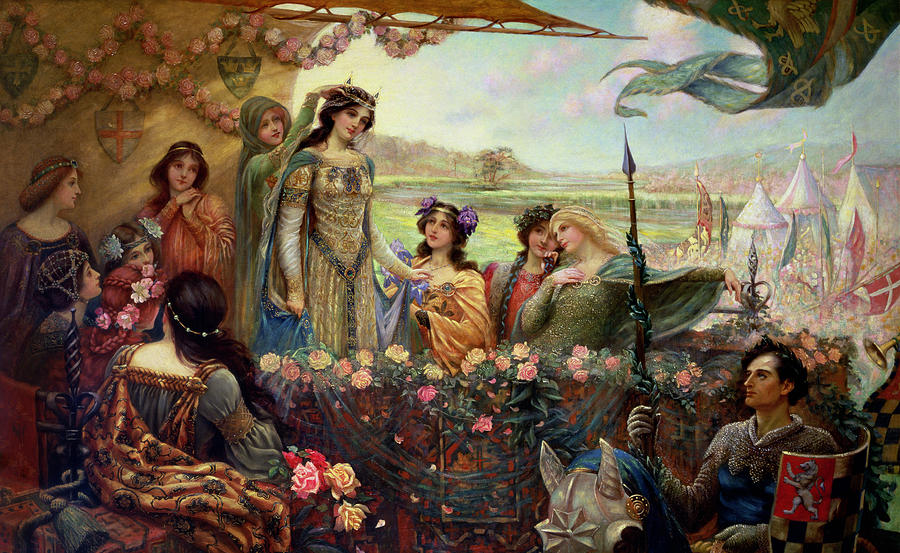
Additional Resources
Art UK: Notes about the Celtic Revival
For more folktales that J. F. Campbell collected please open the link here.
Celtic Folktales (Edited by Joseph Jacobs and Illustrated by John D. Batten). New York. G. P. Putnam’s Sons, 1893.

